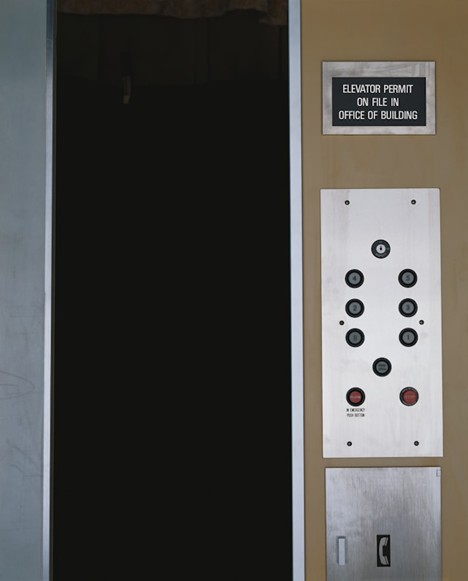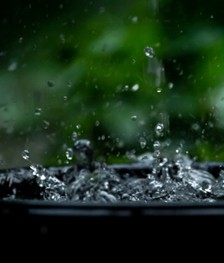Elevator safety depends on the precise coordination of numerous mechanical components, with the ropes responsible for supporting and moving the cab ranking among the most vital. Homeowners and building managers may wonder if a small amount of water can really damage an elevator rope? The answer is a definitive yes.
Companies that install residential elevators in Florida note that even the slightest exposure to moisture, whether from condensation, sprinkler systems, flooding, or a leaking pipe, can seriously weaken a rope’s structural integrity. Understanding exactly how water infiltrates these ropes is essential for both maintenance and safety, as even minor exposure can initiate long-term damage.
How Moisture Enters Elevator Ropes
Elevator ropes are not solid pieces of metal; they are stranded constructions composed of multiple wire strands wrapped around a core. This design provides flexibility, strength, and traction, but it also leaves tiny interstitial spaces where moisture can penetrate. Capillary action allows water to wick into these spaces, reaching areas where lubricant may not have penetrated during manufacture.
Sisal-core ropes, often referred to as natural fiber core (NFC) ropes, are particularly vulnerable because the fibers naturally absorb moisture. Even high-quality sisal fibers can swell and degrade over time when exposed to water. Manufacturers attempt to mitigate this by soaking fibers in heated lubricants to replace absorbed moisture, but the inherent limitations of natural fibers remain a problem. This is why many industry leaders advocate switching from sisal-core to synthetic-core ropes, which are less prone to water damage.
The Critical Role of Lubricant
Lubricant is an essential component. Applied during manufacturing, it fills gaps within the rope, reduces internal friction, and protects both the fibers and outer steel strands from corrosion. In sisal-core ropes, lubricant can comprise 10-15% of the rope’s total weight, making it vital to overall performance.
However, lubricant is not a cure-all. While it helps prevent rust and friction-related wear, it cannot stop moisture from entering a rope after exposure. Re-lubrication primarily serves to minimize friction and reduce wear on the sheaves, but it cannot remove water that has already penetrated the core. Once moisture infiltrates a rope, damage begins immediately, and the rope’s lifespan is dramatically shortened.
The Devastating Effects of Moisture
Moisture damages elevator ropes in several ways. In sisal-core ropes, water causes fibers to swell, expanding the core and pressing outward against the surrounding steel strands. This swelling increases the rope’s diameter while shortening its overall length, potentially lifting governor or compensation sheaves and affecting the system’s performance.
Even ropes with steel cores or mixed cores are vulnerable. Water can wick along wire strands, leading to rouging and rust formation. Internal friction increases, metal particles are ground loose, and the structural integrity of the rope declines. These changes can cause the rope to slip in the sheave groove, damage the drive sheave, and shorten the lifespan of both ropes and other mechanical components.
Sources of Moisture in Elevator Systems
Water exposure can occur in unexpected ways. Beyond flooding or sprinkler incidents, everyday conditions contribute to rope deterioration. High humidity, condensation, and air movement within a hoistway all introduce moisture. For instance, when a rope cycles from a hot, humid elevator shaft to a cooler, air-conditioned machine room, condensation can form on its surface. Over time, this repeated wetting and drying weakens the rope’s fibers and accelerates internal corrosion.
Even stagnant sections of rope can become moisture-saturated if they are not in constant motion, making elevators in less-frequented shafts more susceptible to damage. In tropical or subtropical climates, such as the southeastern United States, this process is especially pronounced due to naturally high humidity.
Signs of Moisture Damage
Recognizing water damage early is essential. Rouging, which appears as fine red oxide dust, is often the first visible sign. This dust originates inside the rope, indicating that the core has begun to degrade. Once the core loses its strength, the steel strands experience increased friction, grinding away metal and producing the characteristic powdery residue.
Other indicators include changes in rope diameter, stiffness, and reduced tension, which can affect elevator leveling and ride quality. Even if no visible signs are apparent, any rope suspected of water exposure should be evaluated immediately, as the risk of catastrophic failure increases with time.
Why Immediate Replacement is Critical
There is no effective method to reverse water damage in elevator ropes. Unlike minor mechanical adjustments, moisture compromises the fundamental integrity of the rope’s core and strands. Once wet, the rope is on a “fast track” to failure. Replacement is the only safe course of action. Delaying replacement not only endangers passengers but also threatens other components, as damaged ropes can accelerate wear on sheaves, motors, and compensating systems.
Elevator codes, including ASME A17.6, highlight replacement criteria for ropes showing signs of unfavorable wear, such as rouging. While the code does not explicitly prescribe procedures for water-saturated ropes, industry best practice dictates immediate replacement to maintain safety and performance standards.
Preventative Measures
Although it is impossible to eliminate all moisture risks, several steps can reduce exposure. Regular inspections, environmental controls within the hoistway, and consistent lubrication schedules help prolong rope life. Using synthetic-core ropes or ropes with internal wire cores (IWRC) provides additional resistance to moisture compared to traditional sisal-core designs.
It is also crucial to minimize environmental hazards such as leaking pipes, malfunctioning sprinklers, or areas prone to flooding. Ensuring proper ventilation and temperature regulation in elevator shafts can reduce condensation buildup and slow degradation over time.
Understanding Rope Vulnerability is Essential
Elevator ropes are engineered for strength and durability, but they are not invulnerable. Moisture, whether from condensation, humidity, or direct contact with water, poses a serious threat to rope integrity. Once a rope gets wet, internal fibers swell, metal strands corrode, and the overall system is compromised.
Understanding the vulnerability of elevator ropes to moisture underscores the importance of preventative maintenance, regular inspections, and prompt replacement when damage is suspected. Building managers and maintenance personnel must treat water exposure as a critical safety issue, because in elevator systems, wet ropes truly equal dead ropes. Ensuring the reliability of these essential components protects both passengers and the longevity of the elevator system itself.









